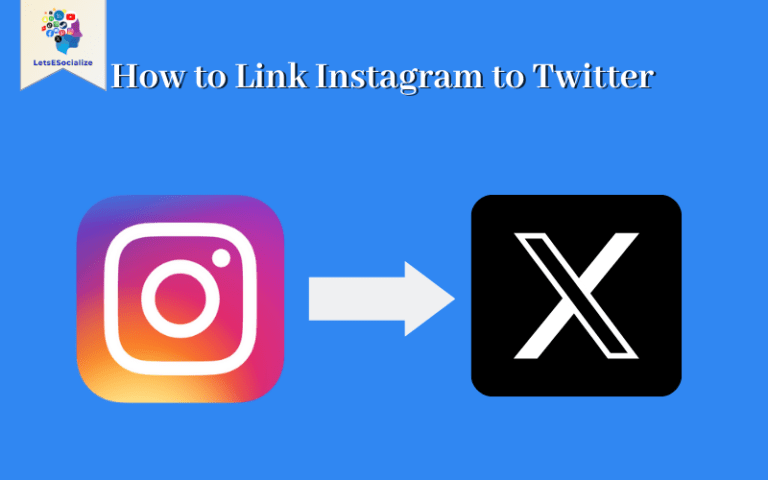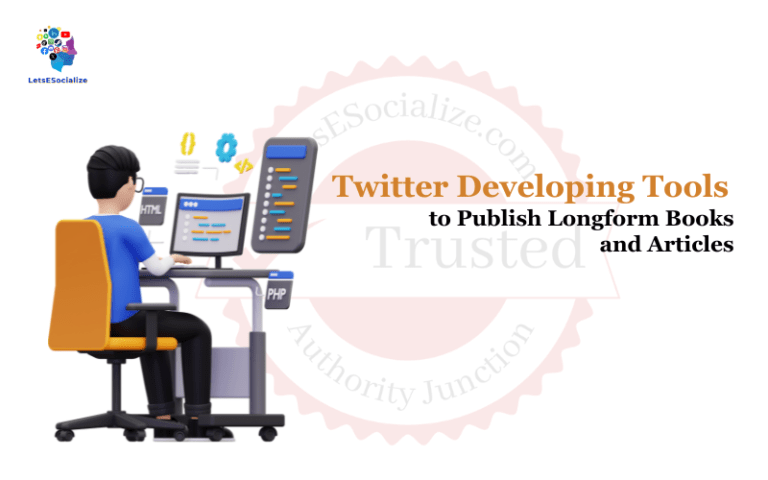Twitter allows users to control certain privacy settings to determine what information is publicly visible or hidden on their profiles. This comprehensive guide explores the various Twitter privacy controls and how to configure them to manage your visibility and security on the platform.
Table of Contents
Overview of Twitter Privacy Settings
Twitter has settings across three main categories that affect privacy:
- Profile privacy – Controls who can view and contact you on Twitter.
- Tweet privacy – Settings for your posted tweets, media privacy, and location tagging.
- Data privacy – Preferences for data collection, ads, and personalization by Twitter.
Key settings like making your account private or blocking users provide core privacy protections.
Additionally, granular settings allow customizing the visibility of specific profile elements, tweets, media, and data.
We’ll dive into the key settings under each category you can adjust to understand Twitter privacy better.
Also read: Exploring Twitter Blue Privacy Policy and Data Collection
Profile Privacy Settings
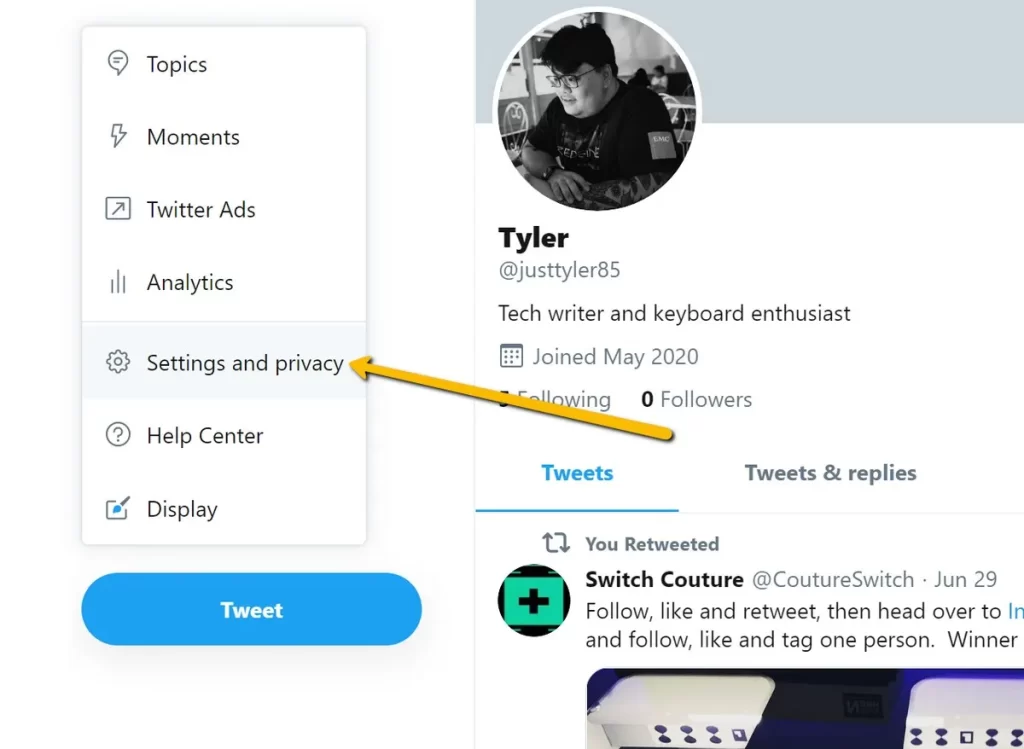
Profile privacy revolves around controlling who can view and interact with your Twitter account.
Make Account Private
This is the core set to limit your Twitter profile’s visibility.
To make your account private:
- Go to Settings > Privacy and Safety
- Toggle “Protect your Tweets” to on
This will:
- Require your approval for new followers
- Only show your tweets to approved followers
- Hide your follower list and tweets from non-followers
It prevents your profile from being viewed publicly without your consent.
Approving/Denying Followers
When private, you’ll get requests from new followers that you can approve or deny.
To manage the following requests:
- Go to your notifications. There will be a Follow Request tab showing pending requests.
- Click Follow next to each request to approve them and let them view your private tweets and profile.
- Use Deny instead to reject and block the follower request.
It’s safer only to approve requests from known contacts. Avoid supporting spam or suspicious accounts.
Blocking Users
You can block other Twitter users from viewing your profile or contacting you:
- On a user’s profile, click the 3-dot menu and select Block
- Or from Home, Notifications, or Messages, click the 3-dot menu next to their name and Block
Blocking prevents users from:
- Viewing your profile or tweets
- Direct messaging or mentioning you
- Following you on Twitter
Keep your block list up to date to limit harassment. Twitter also lets you batch-block keywords, phrases, or emails associated with troublesome accounts.
Tweet Privacy
Even if your account is public, you can hide replies to your tweets. From a tweet’s overflow menu:
- Select “Change who can reply”
- Choose between everyone, people you follow, and only people you mention.
Similarly, you can limit who can see your liked tweets and tagged media in the privacy settings.
This lets you tweet publicly but control engagement.
Controlling Tweet Visibility
Beyond your overall account privacy settings, you can fine-tune visibility and discovery controls for specific aspects of your tweets.
Location Tagging in Tweets
When composing a tweet, you may tag a location that appears publicly.
To disable this:
- Go to Settings > Privacy and Safety > Location information
- Uncheck “Add a location to my Tweets”
This prevents revealing location data in your tweets.
Media Privacy Settings
By default, images and videos you tweet are publicly accessible.
You can restrict media visibility in your settings:
- Go to Settings > Privacy and Safety > Media
- Toggle off “Allow viewers to see media associated with Tweets.”
Attached media will only be visible to your followers, even if your tweets are public.
Tagging in Photos
If people tag you in photos on Twitter, you can control if it’s visible:
- Go to Settings > Privacy and Safety > Photo tagging
- Disable “Allow people to tag you in photos”
You’ll get untagged from existing photos. Others can still mention you, not tag.
Discoverability and Contacts
You can opt out of your profile being discoverable in various Twitter contact import prompts and searches:
- Go to Settings > Discoverability and contacts
- Toggle off options like “Let others find you by your email address” or “Let others find you by your phone number.”
This provides more control over how people search and connect with you on Twitter.
Tweet Deletion and Archival

Twitter gives you options to remove tweets or store them privately.
Deleting Tweets
Directly delete tweets:
- Click the overflow menu on a tweet > Delete
- Or use the bulk delete tool to mass delete old tweets
However, deleted tweets may still appear in Twitter searches temporarily before being purged.
Archiving Instead of Deleting
You can privately archive tweets to remove them from your profile instead of deleting them:
- Again, use the overflow menu on tweets
- Choose “Hide Tweet” instead of delete
- Hidden tweets stay in your private archive
This removes tweets from your public profile while preserving a copy that is still accessible privately to you. Re-showing tweets will unarchive them back onto your profile.
Enabling Auto-Deletion of Old Tweets
You can automatically purge old tweets after a set duration:
- Go to Settings > Privacy and Safety > Tweet lifetime
- Choose a duration like 60 days, one year, etc.
Tweets older than the set threshold will get periodically deleted from your profile automatically.
This conveniently cleans up your old tweet history after a certain time.
Controlling Your Twitter Data Privacy
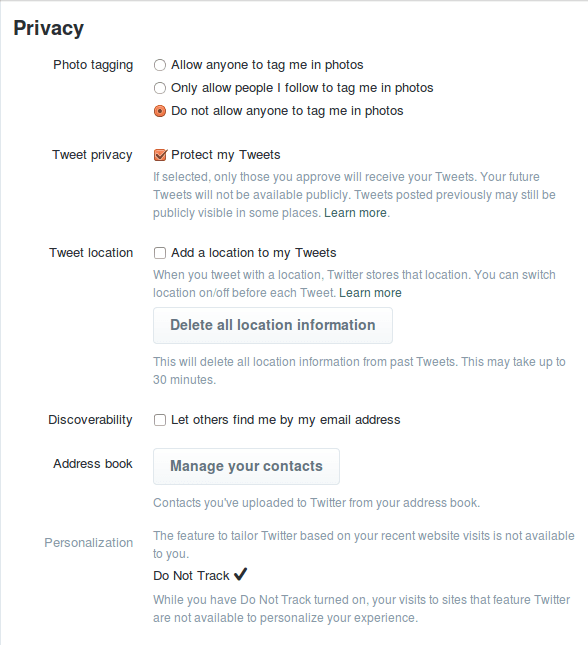
Beyond just profile and tweet privacy settings, Twitter has data privacy controls for optional data collection, ads, and personalization preferences.
Personalization Settings
Twitter may customize your experience based on inferred interests and activity data.
You can turn off personalization:
- Go to Settings > Privacy and Safety > Personalization and Data
- Toggle off personalized recommendations
This stops Twitter from clustering your interests to serve targeted content.
You can also clear the inferred interests Twitter has associated with your account from this menu.
Direct Message Scanning
Twitter may optionally scan your DMs to try and serve “relevant” suggestions and ads.
To turn off DM scanning:
- Go to Settings > Privacy and Safety > Personalization and Data
- Toggle off “Scan Direct Messages to improve suggestions.”
This prevents personal info in private DMs from being used for ads or recommendations.
Ad Preferences
Twitter shows you ads based on info like your interests, location, and activity.
You can view your ad profile and turn off personalized ads:
- Go to Settings > Privacy and Safety > Personalization and Data > Ad preferences
- See topics Twitter associates with you for targeting
- Toggle off personalized ads completely or remove specific topics
Use of Emails/Phone Numbers
If you provide your email or phone to Twitter, they may target ads or allow you to find your account via that contact info.
Disable this:
- Go to Settings > Privacy and Safety > Personalization and Data
- Uncheck options for ads based on your contact info
This stops Twitter from linking your advertising profile across other channels.
Data Download
Twitter allows you to download all the data they have collected about your account and activity on Twitter.
To request your archive:
- Go to Settings > Your Account > Download an archive of your data
This is useful to understand what Twitter data exists about you for cleaning it up or opting out of collection where possible.
Securing Your Twitter Account
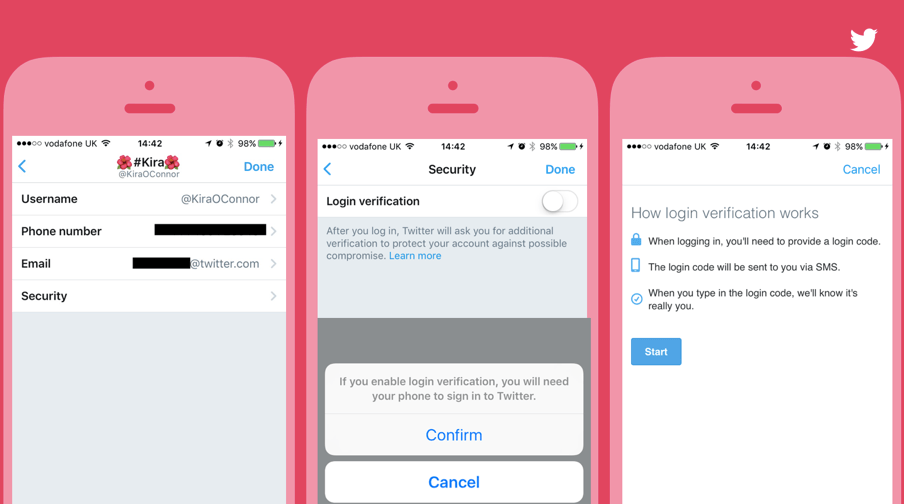
Beyond privacy settings, enabling security protections helps guard your Twitter account.
Login Approvals
Enable two-factor authentication:
- Go to Settings > Security and account access > Security > Two-factor authentication
- Require a code from your mobile, authenticator app, or security key to log in to Twitter
This adds an extra layer of identity verification for login.
Password Manager
Use a password manager to generate and store a strong, unique password for your Twitter account. Avoid password reuse across sites.
Additionally, set up account recovery methods like a trusted phone number and email if you ever get locked out.
Login Notifications
Get alerts about unrecognized logins:
- Go to Settings > Security and account access > Security > Login notifications
- Toggle on log-in notification emails or SMS messages
Monitoring for suspicious new sessions lets you promptly change your password if your account is compromised.
Review Connected Apps
Revoke access for any unfamiliar linked apps you don’t recognize:
- Go to Settings > Security and account access > Apps and sessions
- Revoke access for suspicious third-party apps
This is important if you accidentally grant malware or insecure apps permission to your Twitter account.
Privacy Concerns Around Twitter Data
While Twitter’s settings provide controls over certain elements of your public profile, tweets, and personal data, there are limitations in Twitter’s approach to privacy. Some concerns include:
- Persistence of deleted tweets – Deleted/archived tweets may still appear in search results and Twitter data for a time.
- Metadata collection – Activity logs, devices used, locations, etc., still get collected and monetized by Twitter.
- Algorithmic inferences – Interests, demographics, and preferences get inferred for ad targeting despite some controls.
- Anonymized analytics – Deleting individual tweets doesn’t stop your data from being used in aggregate analytics.
- Changes to policies – Twitter can evolve privacy policies over time, degrading protections.
- Legal requests – Twitter will hand over user data when compelled by governments, law enforcement, etc.
While Twitter does enable certain personal controls, the platform’s business incentives around data collection and monetization can conflict with user privacy ideals.
Best Practices for Twitter Privacy
Given the limitations, here are some best practices users can adopt for better Twitter privacy:
- Make your account private if you only want followers to see your tweets
- Limit Apps connected to your Twitter account
- Use anonymous or pseudonymous handles to avoid real identity
- Periodically review and prune your follower’s list
- Disable as much ad/data tracking in settings as possible
- Avoid location tagging your tweets
- Delete old tweets and media regularly
- Don’t tweet anything illegal or that could be compromising
- Use good judgment on what you post – the Internet doesn’t forget
Balancing privacy while still using Twitter effectively does require some extra diligence from users.
Additionally, engaging in the public conversation on improving social media privacy is worthwhile to encourage better standards industry-wide, hopefully.
Twitter Privacy Compared to Other Platforms
Compared to other major social networks, Twitter takes a relatively transparent approach but still faces some of the same systemic privacy issues:
- Twitter allows pseudonymous accounts without enforcing real identities
- Twitter offers more visibility into data collected for ads/personalization vs. Instagram, Facebook
- Granular privacy controls for tweets, media, contacts, etc., provide levers for users to restrict visibility
- Deletion controls are useful but imperfect – deleted tweets persist internally at Twitter
- Metadata like locations, devices, and activity logs still get heavily tracked for ads similar to other platforms
- Anonymizing data before analytics and compliance with government requests complicate true data deletion
In general, Twitter enables more pseudonymity and selective visibility settings than Instagram or Facebook, but ultimately, the platforms share an economic model centered on data collection and targeted advertising.
More regulation and financial incentives to prioritize user privacy over engagement and ad revenue are likely necessary to transform social media privacy meaningfully.
Twitter’s Ongoing Evolution on Privacy
Privacy on Twitter will continue evolving as the company rolls out additional controls or potentially loosens protections based on business incentives or regulatory pressures.
Some recent and upcoming changes related to privacy include:
- More granular audience selector when tweeting (choose all followers vs. subset like “close friends”)
- Removing the exact geolocation tag from tweets and only displaying the city name
- Allowing removal from suggested recommendations
- Enabling untagging from tweets (for user names via mentions)
- Potential subscription offering without ads based on data collection and targeting
- Attempting to honor ephemeral stories that disappear, like Snapchat, alongside tweets
- Fighting abuse/harassment more proactively to protect marginalized communities
The privacy conversation remains active on Twitter’s platform itself. Users, advocates, and regulators continue nudging the company in better directions, even if it is gradual.
Where Twitter takes privacy ultimately depends on product evolution and society collectively updating social norms and laws around data ethics.
Fostering a Culture of Consent on Social Media
Stepping back, addressing privacy on Twitter and social media more broadly requires tackling ecosystem-wide challenges:
- Rethinking ad targeting economics that incentivizes data exploitation vs. user alignment
- Enabling collective ownership and governance vs. centralized corporate control
- Building peer-to-peer data sharing on consent rather than surveillance
- Normalizing anonymity without succumbing to toxicity
- Developing auditing and oversight powers for users over algorithms
- Basing personalization on explicit preferences, not inferred interests
- Allowing interoperable digital identities not locked to platforms
The solution likely involves fundamentally shifting power and incentives in the social media industry toward user consent. This may emerge through market competition, grassroots movements, thoughtful regulation, and reform business models, placing community before addiction and outrage.
There are certainly no easy answers, but spotlighting issues of consent is crucial to moving us collectively toward healthier online ecosystems.
Fostering Critical Thinking Around Social Media
Ultimately, citizens’ social media literacy and critical thinking will likely play a pivotal role in driving change. Some principles worth instilling include:
- Considering how algorithms distort perceptions vs. reality
- Recognizing the manipulative dynamics of engagement-based advertising
- Thinking before reacting to limit impulse and outrage
- Pausing to fact-check information quality from unknown sources
- Contemplating how anonymity both enables creativity and toxicity
- Reflecting on whether platforms bring out our higher or lower selves
A more intentional social media culture can emerge from increased user awareness, empowerment, and responsibility.
By approaching Twitter and social networking as conscious participants – not passive products – we allow these technologies to uplift humanity instead of degrading and dividing us.
The choice ahead is ours to make.
Key Takeaways on Understanding Twitter Privacy
Some core points on managing privacy on Twitter:
- Go private to restrict your account to approved followers only
- Control tweet visibility via options like hiding replies
- Disable location tagging and untag yourself from photos
- Opt-out of ad tracking and personalization to limit data collection
- Delete or archive tweets you no longer want public
- Use anonymity consciously if you desire privacy
- Set a strong password and enable two-factor authentication
- Review connected apps and be cautious in granting permissions
- Twitter still has incentives at odds with user privacy in many cases
- Push for policies and cultural norms that empower people over platforms
While Twitter enables certain privacy settings, as covered here, treating it as an intrinsically public platform and using discretion in your post is always wise.
How Twitter evolves privacy protections in the face of rising regulatory scrutiny remains to be seen. Hopefully, the trajectory heads toward giving users more control over their privacy, data, and online experience.


